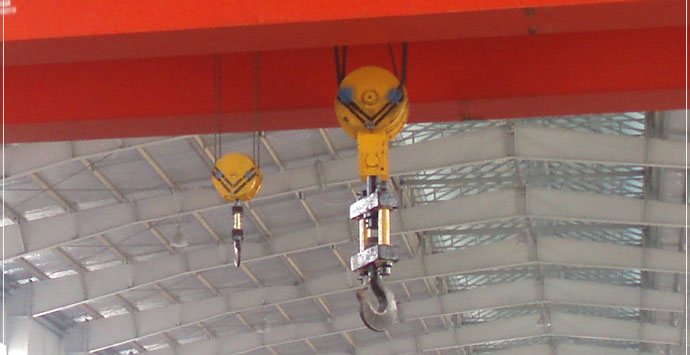Замена жичане конопце на вашој дизалици није само задатак одржавања; То је критична сигурност. Урађено погрешно, Може довести до превременог квара конопца, незгоде, скупо прекидање времена, и тешке повреде. Овај водич описује суштинске кораке за сигурно и правилно постављање новог жичаног конопа на вашој дизалици. Увек приоритет безбедности и посавете се на специфични сервисни приручник ваше дизалице и релевантне безбедносне прописе (попут ОСХА, АНСИ / АСМЕ Б30 Стандарди) пре почетка.

Безбедност: Осигурава да се коноп наступа као дизајниран под оптерећењем.
Дуговечност: Спречава оштећења током инсталације која драстично скраћује рок конопца.
Перформансе: Осигурава глатко пролијање и не надовођење без киних или птица.
Усаглашавање: Испуњава регулаторне и произвођачке захтеве.
1. Исправан конопац: Проверите тачну спецификацију (пречник, разреда, изградња, дужина, Тип - отпоран на ротацију или не) Из приручника за кран. Коришћење погрешног конопа је опасно.
2. Лична заштитна опрема (Ппе): Рукавице за тешке дужности, сигурносне наочаре, челична тое чизме, тврди шешир. Жичани конопци су оштри!
3. Опрема за подизање: Одговарајуће праменове, окови, и потенцијално мали дио за сигурно руковање колутом.
4. Алате: Секачи жичане конопце, трака, Означавање боје / креде, кључ за обртни момент, Одговарајуће утичнице / кључеви за фитинге, мазиво (Ако је одредио произвођач), Алат за задржавање основа (За ротације отпорне на ротацију), малте или дрифт игле.
5. Чисти радни простор: Стан, чисто подручје довољно велико да одмотате нови коноп без кикова или га превлачи на оштрим ивицама или крхотинама.
6. Припрема за дизалице: Смањите у потпуности смањити блок носача / дизала. Укључите све сигурносне браве / игле. Изолати моћ (Блокирање / означавање - Лото)! Точкови за отпатке ако је мобилни. У потпуности уклоните стари конопац, Прегледавање Схреевеса и бубњара прво за хабање / оштећење.

1. Прегледајте нови конопац: Пажљиво га одмотајте на чисту површину. Визуелно прегледајте целокупну дужину за било какве недостатке производње, кинкс, здробљени праменови, или корозија пре инсталације. Проверите потврде.
2. Припремите крај бубња:
3. Рути ужети:
4. Припремите крај оптерећења (Кука од дизалице и блок):
5. Иницијално охлађење & Затезање:
6. Подмазивање (Ако је применљиво): Нанесите мазиво на коноп само ако то током инсталације посебно препоручује произвођач дизалице или произвођач конопа или конопа. Неки модерни конопци имају довољно фабричког подмазивања.
7. Коначно затезање & Пре-оперативне провере:
Подигните блок куке полако до максималне висине. Ово примењује почетну радну напетост и осигурава пуну, уски прилив на бубањ.
Потпуно спустите блок. Посматрајте пуњење конопа равномерно с бубња и поновно пуњење равномерно натраг.
Визуелно прегледајте целокупно трчање ужета. Проверите све терминације и сидра. Осигурајте да се нема кикових формираних током полухладе.
Проверите да ли конопац правилно седи у свим стрелицама.
8. Период: Поправите дизалицу полако и лагано за првих неколико циклуса. Будите додатни будни за било какве необичне звукове, Питања опуштања, или визуелне недостатке на конопцу. Пратите све конкретне поступке у приручнику.

1. Блокада / ознака (Срце): Ово се не може преговарати. Изоловати све изворе енергије пре почетка.
2. Ппе: Увек носите одговарајућу заштиту.
3. Никада не стојите у бигхту: Никада не стоји унутар петље конопа под напетошћу или где би се могло затегнути.
4. Избегавајте кинкове: Кинк трајно оштећује жичану конопцу. Одбаците кикирани конопац.
5. Исправно престанак: Неправилно седећи клинови или преокрећени мртви / живе крајеви су катастрофалне тачке квара.
6. Схеаве & Инспекција бубња: Оштећене или неусклађене Схреевес / Гроовес ће брзо уништити нови конопац. Прво их поправите.
7. Руковање ротационим ротацијом: Ови конопци захтевају посебну негу (Алат за задржавање основа) Током инсталације да се спречи птицајући. Прецизно следите упутства произвођача.
8. Претерано обрнуто / недовољно обртање: Користите кључ момента!
9. Игнорирање приручника: Упуте произвођача ваше дизалице су надмирили било који општи водич.
10. Прескакање инспекције: Прегледајте нови уже и све компоненте дизалице темељно.


Инсталирање жичане конопце на дизалици захтева пажњу пажљивим пажњом на детаље, строг придржавање безбедносних протокола, и темељно разумевање специфичних захтева за дизалицом и конопцима. Појуривање овог процеса или узимајући пречице угрожава животе и опрему. Ако нисте сигурни у било који корак, недостаје одговарајуће алате, или наићи на неочекивана питања, Зауставите се и консултовати са квалификованом техничара кран. Правилна инсталација је темељ за безбедан, поуздан, и ефикасна операција дизалице. Увести време и брините се да то урадите како треба.
Ценимо ваше повратне информације! Молимо испуните доњи образац како бисмо прилагодили наше услуге на ваше специфичне потребе.


Кликните на дугме да бисте добили информације и цитати производа на ВхатсАпп-у.
Набавити цитат
Најновији коментари